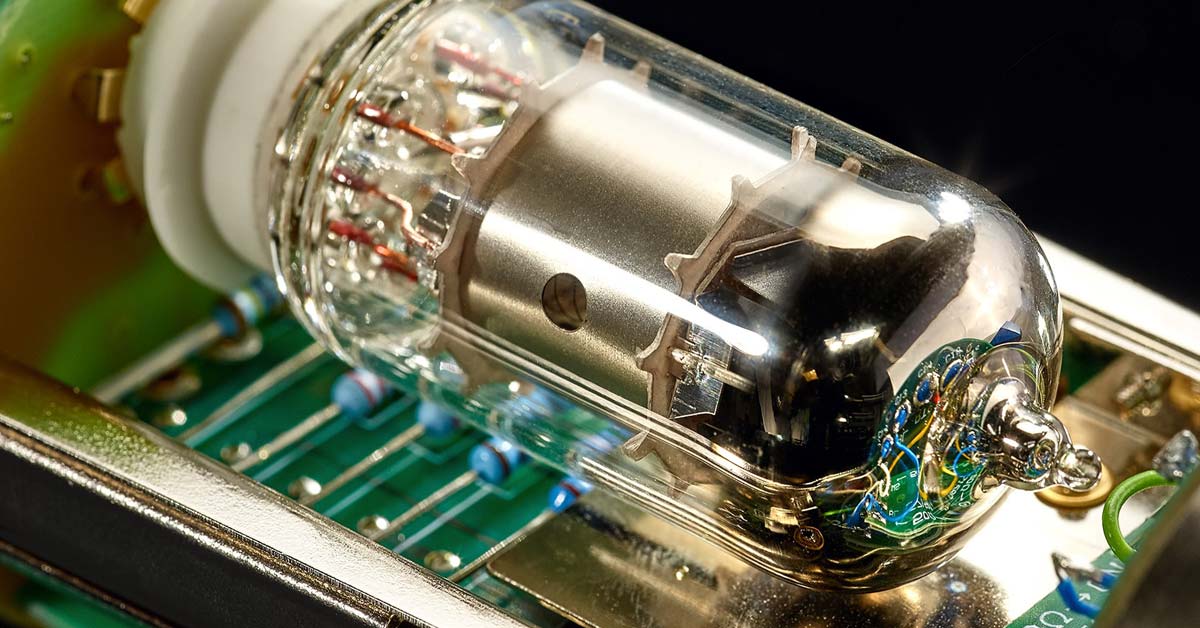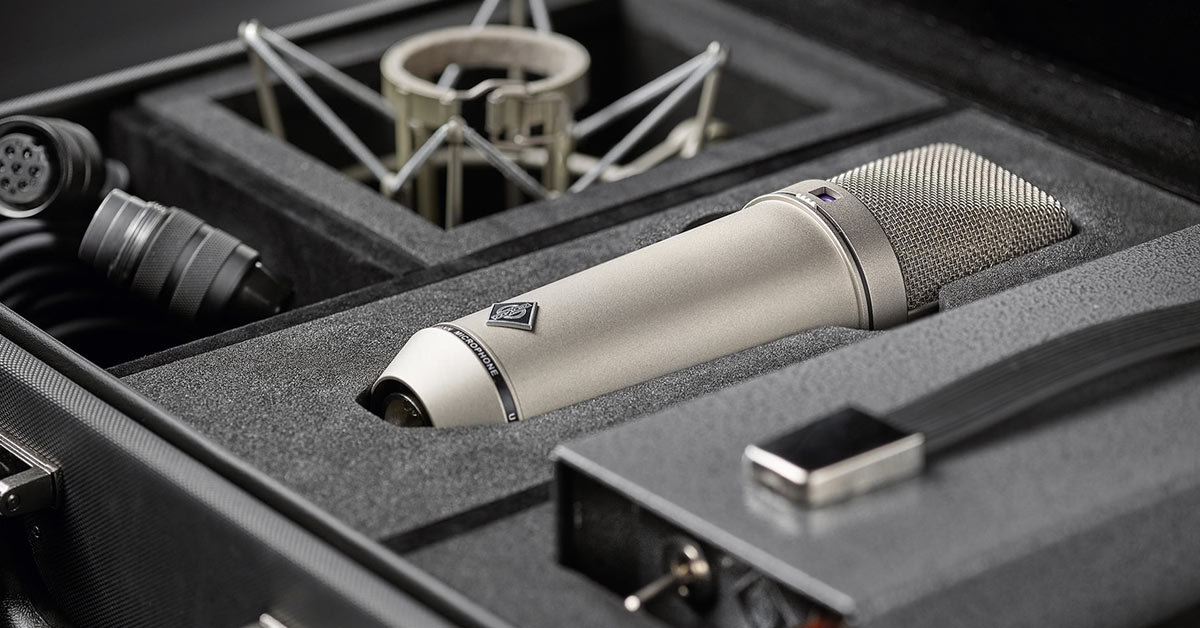Necessity is often the mother of invention, as was the case with the Neumann U67. In the late 1950s, Neumann received the devastating news that the Telefunken tube used in its then-premier tube condenser microphone, the U47, would be discontinued. One last production run of Telefunken VF 14M tubes supplied Neumann with enough to sell U47s into the early 1960s, while the process of creating Neumann's new studio standard began.
Neumann added many features previously not present in the U47 to its replacement, the U67. Among the most notable changes were a -10 dB pad, a third polar pattern (figure-of-eight added to omni and cardioid), and the use of Mylar as opposed to PVC for the capsule membrane. Additionally, the housing was changed to feature a tapered body and a tapered head grille. The tapered head helped reduce capsule resonance and the tapered body leveraged new metal lathing technology for an unprecedentedly sleek appearance.
 The Beatles or The Rolling Stones?
The Beatles or The Rolling Stones?
Whichever you prefer, both prefer the Neumann U67. Famous vocal takes with the original U67 include Paul McCartney’s “Hey Jude” and Mick Jagger’s “Sympathy for the Devil.” It is used throughout Nirvana’s Nevermind album, and can claim the capture of Ian Gillan’s stratospheric performance of “Highway Star” among its many triumphs. When a single microphone can faithfully present Gillan’s operatic tenor, McCartney’s evocative balladeering, Cobain’s plaintive howls and Jagger’s wildest proclamations, only one conclusion can be reached: this is a great-sounding microphone for a wide variety of vocalists.
More than just a vocal mic though, the U67 was used to capture the piano on The Beatles’ “A Day in the Life,” and holds a special place in rock history as the most commonly used stereo set in Glyn Johns’ famous four-mic drum set technique. With James Taylor, Linda Ronstadt, Stevie Wonder and countless others as enthusiastic users, few microphones can name-drop as effectively as the Neumann U67.
What made the U67 so special?
Crooning had been the order of the day through much of the 1950s, and singing close to the microphone was becoming an increasingly popular style in recording at the time. The U67 featured an always-active low-frequency roll-off along with a high-frequency roll-off built into the amplifier component of the microphone’s circuit. This enabled it to handle high levels at close range, and singers of all kinds fell in love with it immediately. Whether you were a high-octane rock vocalist or a deeply nuanced ballad singer, the U67 could capture every bit of interpretation you brought to the take.
As engineers began experimenting more broadly with the U67, its versatility was soon made plain. Whether capturing the complex tonal color of a centuries-old violin or the brutal presence of a 100-watt Marshall stack, its high maximum sound-pressure level and broad frequency response combined to make it an essential member of most professional studios’ microphone locker.

Broad acceptance of the reissued Neumann U67 Set
The history of the Neumann U67 is the history of recorded music in the latter part of the 20th century, and its reissue by Neumann has sparked some real excitement in the professional recording world. The Neumann U67 is so firmly positioned as the standard-bearer for tube condenser studio microphones that nearly all mic manufacturers have produced replicas of it. Given their ownership of all of the patents and their vast production know-how, Neumann was uniquely positioned to issue a wholly faithful replacement to the U67, and they have delivered on that opportunity.
Neumann boasts 100% historical accuracy for the reissued U67; in fact, vintage components from original U67s can safely be swapped into either the power supply or the microphone itself. It is equipped with the legendary K67 capsule and the EF86 tube, and like the original, it has selectable Cardioid, Omni and Bi-Directional polar patterns along with a -10 dB pad. Numerous “shootouts” have been undertaken between the reissue and the original, and the bulk of these comparisons have earned the reissue enthusiastic approval as a lauded alternative for studio owners who prefer not to pay $10,000 or more for a 50-year old microphone.
Studio applications for the U67
The term “workhorse” in reference to a studio mic is a little overused, perhaps even hackneyed, but few microphones can more legitimately lay claim to that description than the U67. It has a glorious history as a lead vocal microphone, but there is really no category of instrument where it’s not appropriate. As a side mic in mid/side recording, it finds detail in an acoustic piano you never thought was there. Cozy it up to the F-hole on a double bass and just listen to it bloom. As a room microphone, for solo violin capture, in choir and string section contexts, and in applications perhaps still waiting to be discovered, the Neumann U67 is consistently ideal. In terms of both versatility and performance, this microphone is practically unparalleled.
View our full collection of Neumann Microphones
.jpeg)







 The Beatles or The Rolling Stones?
The Beatles or The Rolling Stones?